Historical Context of Book Censorship
Book banning has long been a contentious issue, drawing lines between freedom of expression and parental control. History teaches us that attempts to censor literature are often driven by fear—fear of differing ideologies, fear of cultural change, and fear for children’s innocence. In the current political climate, we’re witnessing a resurgence of such concerns, particularly surrounding LGBTQ+ themes and racial issues. The modern era of book bans extends far beyond the classic struggles over the works of Mark Twain or J.D. Salinger; it indicates a deepening ideological division within American society.
Recent Trends and Legislative Actions
In recent years, the rhetoric surrounding book bans has escalated sharply, particularly in states like Texas and Florida. These states have proposed extensive book restrictions especially in schools, which can create a chilling effect on what educators feel they can teach. The legislative actions often stem from concerns voiced by parents and communities about what their children should be reading. Yet, the implementation of these bans often appears less about community interest and more about political grandstanding.
https://img-h0ster.s3.us-west-2.amazonaws.com/civicmag/450_content.jpg
Supporters of these bans claim they shield children from inappropriate content. However, critics argue that such measures infringe upon educational freedom and limit students’ access to diverse perspectives. They contend that schools should serve as a microcosm of society, offering students a wealth of narratives—including those marginalized by mainstream discourse. In this sense, the books that often come under fire are those that reflect a broader, more nuanced understanding of American identities.
The Debate: Parental Control vs. Intellectual Freedom
The core of the debate centers increasingly around concepts of parental control versus educational authority. To some, parents bear the right to dictate their child’s reading materials within school settings. Others argue that this kind of control exists beside professional educators’ established authority, potentially stifling students’ intellectual curiosity. As these discussions unfold, advocacy groups across the nation are reminding the public about the importance of diverse representation and the empowered narratives that fuel young minds.
Many scholars point out that literature plays a pivotal role in education. It helps students to process gender, community, and history in ways that are often left out of traditional curricula. To deny them access to works by authors like Toni Morrison, Benjamin Alire Sáenz, or Alison Bechdel not only limits their education but also diminishes the rich fabric of American culture.
Nationwide Implications
Incidents of book banning have ignited nationwide discussions concerning the role of literature in education and society. Across the country, coalitions have formed, spearheaded by teachers, librarians, and concerned citizens, to combat censorship. Protests have erupted, often visions of community engagement reflecting the poignant saying: “Books unite us, censorship divides us.”
This dynamic pushes us to reflect on what we truly value: Are we fostering a society where children are encouraged to engage with varied ideologies, or are we curating their experiences to fit narrow frameworks dictated by particular groups? More importantly, what does it say about us as a society when contentious cultural conversations push us toward exclusionary practices rather than inclusive learning?
A Future of Inclusive Education
Advocates for diversity in literature emphasize the necessity of teaching through a lens that encompasses multiple voices. Whether it is the narratives of underrepresented communities, or those delving into complex societal issues, the inclusion of varying perspectives prepares students for active engagement in a multicultural world.
This isn’t just about protecting certain ideas; it involves nurturing critical thinking skills so youngsters can assess contrasting viewpoints. As Susan Sontag once said, “The imagination is a tool of survival.” If we limit the materials upon which this imagination draws, we not only diminish children’s capacity for understanding the world, we stifle the potential for meaningful dialogue and growth that comes with it.



